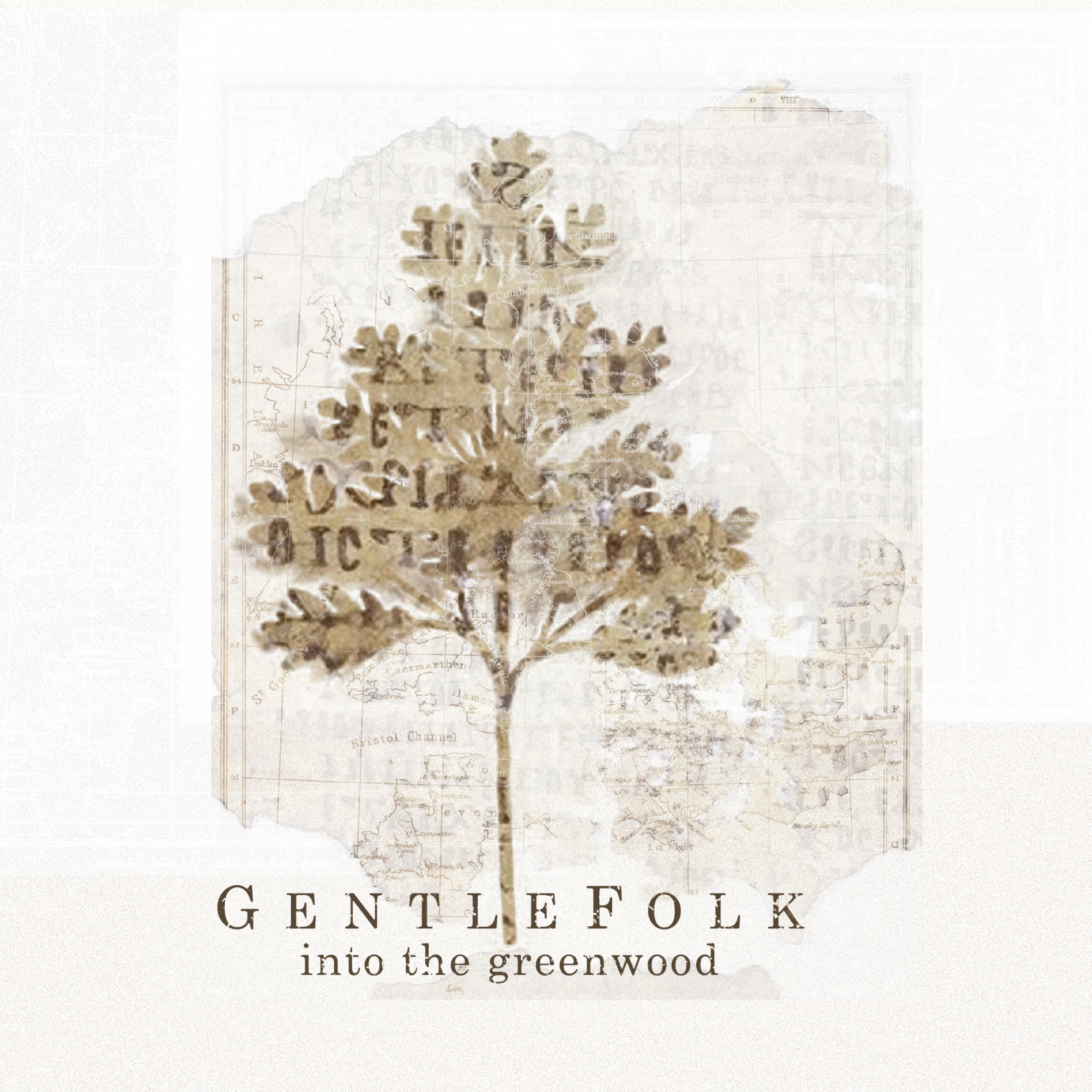GentleFolk
“Charming and at times mesmeric, redolent of the “weird folk” of Tunng and the Incredible String Band, with tree magic, Green Man and faerie folk in the narrative”.
GUARDIAN
“An atmospheric journey through the woodlands of southern England. Calls to mind The Incredible String Band.”
R2
“Into The Greenwood is their first album and it’s pretty special.”
FOLKING.COM
“Genuinely & gently joyous”.
FATEA
“Begrudge not their joy”.
fROOTS
“Perfectly epitomises folk music in principle & execution”.
SONIC BANDWAGON
“One of the most intelligently written and interesting albums of 2015. Something of an ear catching piece and one which is not only musically sound but one that has that rare ability to teach and educate at the same time. Folk of the highest order, a gratifying and courage filled listen. Wondrous and captivating.”
LIVERPOOL SOUND & VISION
GentleFolk are a folk band which formed in the summer of 2014 from a group of South East Londoners who met at a singaround in the Old Nun’s Head in Nunhead. Nigel Hoyle writes the songs & sings & plays guitar. Elizabeth Forrester sings & provides drones on a shruti box. Sarah Lloyd plays fiddle & sings. Ian Kennedy plays cello, flute, recorder & drum & sings. They have played in a variety of woodland settings, several cemeteries, at a reservoir, the bar at Cecil Sharp House, the Golden Hinde & in pubs. They have been described by the comedian Stewart Lee as “Good” & by the folk band Stick In The Wheel as “a psychedelic folk Steely Dan”. www.gentlefolkband.com

Cernunnos: Cernunnos is the Celtic hunter god. He is often depicted as a stag headed man. Herne the hunter is the English analogue of Cernunnos. When Southwark Cathedral was being renovated a decade or so ago, workmen found a well which had been ceremonially closed containing a stone effigy of Cernunnos dating back to pre Roman times…
The Blean: Blean Woods, near Canterbury in Kent, is an ancient place. It has been forested since Saxon times, is a refuge for Nightjars & boasts some wonderful Wild Service Trees, also known as Checker Trees. Thanes used to drive the sheep & cattle along specific trails to seasonal grazing pastures, foresters would coppered the trees & pleach the hedges to stop the animals roaming. The Checkers trees would yield fruit which would be used to brew beer…
The Elms: You may not know that when Dutch Elm Disease went through Europe it did not wipe out the Elm. The beetle which carries the Dutch Elm Disease has a very specific height at which it flies: between 30 & 31 feet. Never below. Any tree under that height is safe. Some trees are immune. When the disease hit Britain most councils elected to fell all their mature Elms irrespective of whether they were infected or not. Brighton council was different; they figured that the prevailing wind coming in from the sea coupled with the natural barrier of the south downs would provide protection from the beetle. They separated the roots of trees growing close to each other & arranged to have the trees watched for signs of illness, culling only the ones which sickened. As a consequence Brighton has a thriving population of about twenty thousand Elms!
The Hidden People: The fairies have long been believed to be resident of the woods & were feared by the people. The Cornish believed that the fairies were angels who refused to take a side when Lucifer rebelled against God. So when Lucifer was cast out & made Hell his preserve, the fairies were sent to Earth being unworthy of Heaven but to good for Hell. They steal away children & leave substitute changelings in their place. They raise the children & marry them into the Fairy community as they cannot bear children on their own. It is unwise to cross a fairy, or even to see one. If a fairy strokes you, the places it touches will become paralysed forever…
Blood On The Oak: Rufus Stone in the New Forest is where the son of William the Conqueror, William Rufus, died in a hunting accident. Tyrell, the king’s huntsman loosed an arrow at a stag & it ricocheted off the animal’s back lodging in Rufus’s heart. Tyrell fled to France, riding his horse backwards to Portsmouth to evade pursuit before catching a boat.
It is rumoured Rufus’s body bled all the way to Winchester; a sign of foul play.
He was killed on the day after the Celtic harvest festival, a day associated with human sacrifice to the gods for a good crop. Royalty was considered to be close to godhood so Rufus would have made a good lamb indeed…
Something Impossible Is Waiting: Badbury Rings, near Wimborne Minster in Dorset, is an Iron Age hill fort. It is rumoured that King Arthur is buried here, ready to awaken when Britain calls…
Wild & Free: Wistman’s Wood on Dartmoor is an old oak wood. It is said that the Wild Hunt emerges from there with giant hounds & a stag headed man & witches & warlocks to roam the moor on dark nights to catch the unwary…
All For The Life Of The Land: The Rowan tree has much significance for Celtic folk. The Irish believe that the seeds were dropped as a gift from the Tuatha Day Danan, the fairies, as a gift.
It is believed to have a protective function against bewitching, Farmers would often make their yokes out of Rowan to protect the cattle & crops. Dairy equipment would be made out of Rowan to stop the milk curdling. Shepherds & wanderers would often make their staffs out of Rowan to ensure safe passage. Cradles were made out of the tree. Heathen Angles believed that the Hawthorn had an analogous effect…
The Green Man: this is a song by Bankside poet & seer, John Crow, about the Green Man who is come to bless our garden…
Against The Sun: When a child was born with a hernia or cleft lip the cunning folk of the locality had a cure based on sympathetic magic. An Ash tree would be located nearby & a cleft would be cut into it. For 7 days, 7 men would carry the child at dawn to the tree & as the sun rose they would pass the child through the cleft from west to east, against the sun, 7 times over. After the 7 days the cleft would be tied together & as the tree healed so would the child…
Song Of The Forest Trees: this is an adaptation of a traditional poem from Ireland, also heard in Dartmoor, with instructions on which are the best woods to burn of a winter time…
Listen on Spotify, download or buy (preferably) the CD online anywhere – like, Amazon….

